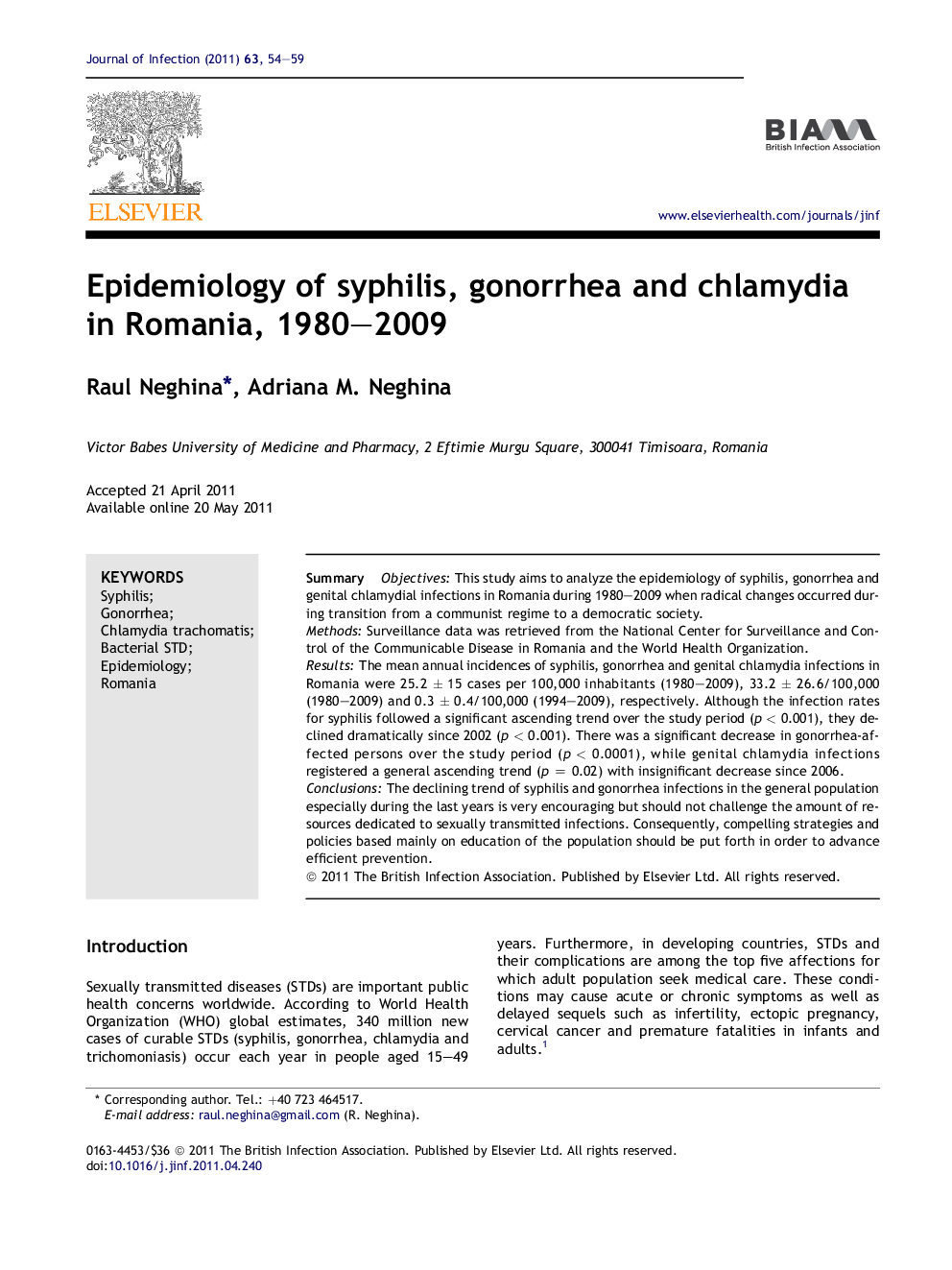| Article ID | Journal | Published Year | Pages | File Type |
|---|---|---|---|---|
| 3375469 | Journal of Infection | 2011 | 6 Pages |
SummaryObjectivesThis study aims to analyze the epidemiology of syphilis, gonorrhea and genital chlamydial infections in Romania during 1980–2009 when radical changes occurred during transition from a communist regime to a democratic society.MethodsSurveillance data was retrieved from the National Center for Surveillance and Control of the Communicable Disease in Romania and the World Health Organization.ResultsThe mean annual incidences of syphilis, gonorrhea and genital chlamydia infections in Romania were 25.2 ± 15 cases per 100,000 inhabitants (1980–2009), 33.2 ± 26.6/100,000 (1980–2009) and 0.3 ± 0.4/100,000 (1994–2009), respectively. Although the infection rates for syphilis followed a significant ascending trend over the study period (p < 0.001), they declined dramatically since 2002 (p < 0.001). There was a significant decrease in gonorrhea-affected persons over the study period (p < 0.0001), while genital chlamydia infections registered a general ascending trend (p = 0.02) with insignificant decrease since 2006.ConclusionsThe declining trend of syphilis and gonorrhea infections in the general population especially during the last years is very encouraging but should not challenge the amount of resources dedicated to sexually transmitted infections. Consequently, compelling strategies and policies based mainly on education of the population should be put forth in order to advance efficient prevention.
